Ahhhh, Saunton. The view upon turning the corner of the house must rank as one of the highlights of British golf. The 18th green is nestled just below the veranda, the plateau first tee to the middle of the vista and on the far right, the West’s first hole strikes off into the massive (5 square miles) Braunton Burrows. This dunes system is the largest in England and backs three miles of the glorious Saunton Sands beach. Just above the northern end of the beach stands the Saunton Sands Hotel. Even if one has no intention of taking a bed, the hotel is well worth visiting for its celebrated views of Barnstable Bay.
The original layout, like so many in England, was a Tom Dunn design which Herbert Fowler re-designed in 1919. The product of this work had the great advantage of post-dating the arrival of the Haskell and was thus considered a fine and difficult test from its inception. In 1932 the club hosted its first major event, the British Ladies Championship, won by the formidable Miss Enid Wilson – the middle of three in a row. Since this time many important amateur and professional events have taken place at Saunton, including the Brabazon Trophy on four occasions and the British Boys in 1997, the year a teenage Sergio Garcia was crowned champion.
Some twenty or so years after Fowler completed his design the course was used by American troops training for the Normandy landing. As can be imagined, the links didn’t fare very well in these circumstances and in the early 50s, the thoroughly under-rated CK Cotton brought the course back to life and made significant changes, especially to the start and end of the round. The course we play today is largely the same with the exception of additional bunkering scattered here and there.
Saunton is well known for its bruising start and rightfully so; the first four holes cover not far off 1670 yards. The opener is a straightish banger playing into the wind - most will not feel as though they lost a shot to par if recording a 5.
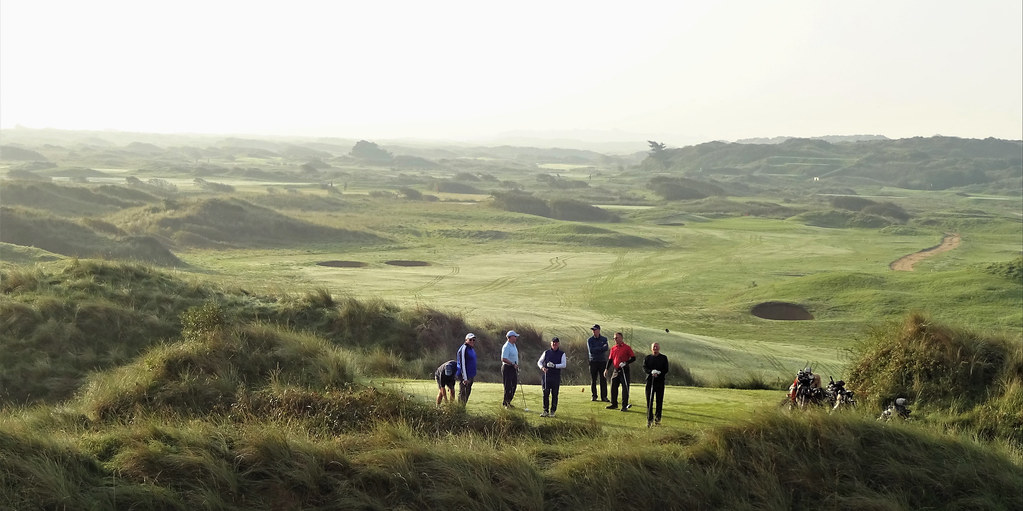
Looking back to the tee and house.
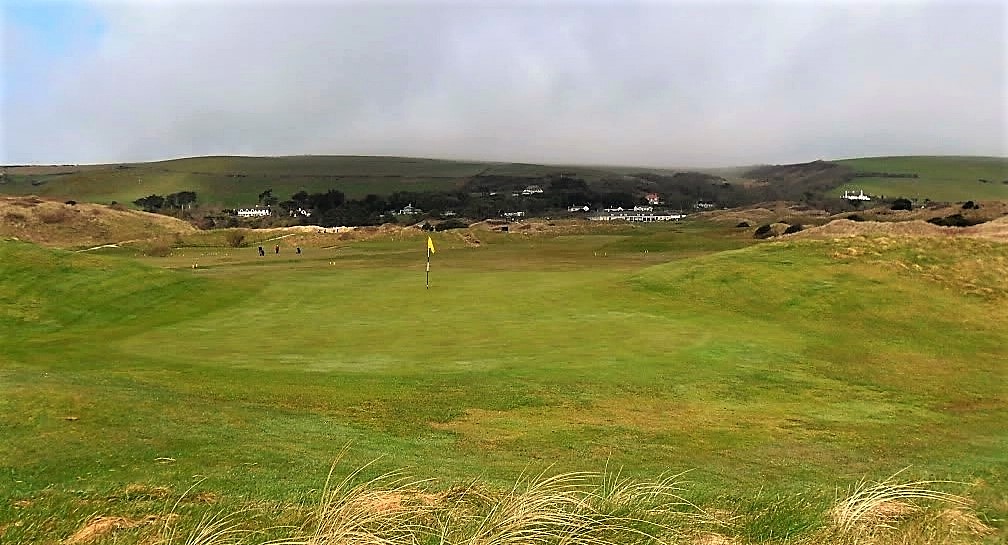
The three-shot second is not that attractive from the tee, but it is disorienting. A ditch protects the left side and two bunkers the right. Once in the fairway, the raised green becomes visible even through the mist.

On the card #3 looks to be a modest hole, but one can't judge a course by the card. This is one of my favourite holes on the course not only for the teasing drive, but also due to an amateurishly raised green creating a tough target.
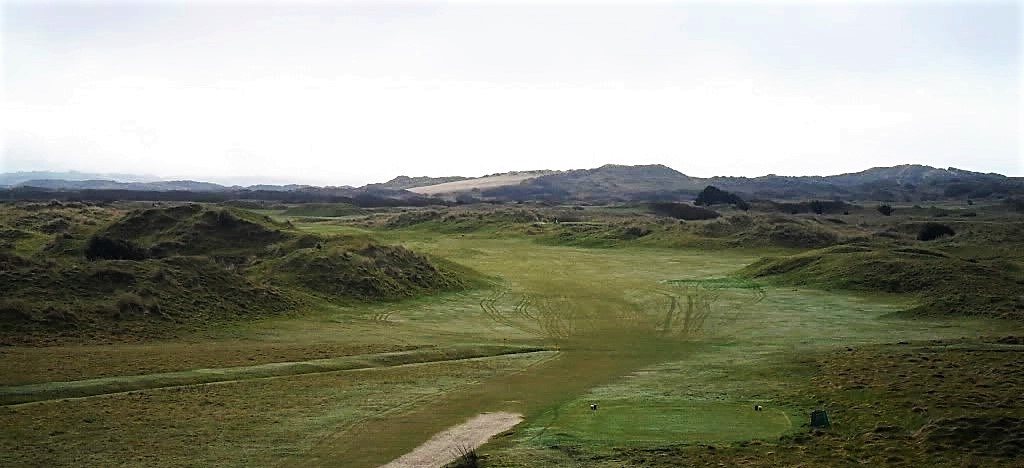
The fourth is a brute! One must challenge severe bunkering to the left of the fairway to earn a view of the green through a gap in the dunes. When this is achieved, a wood or long iron is required for the approach.
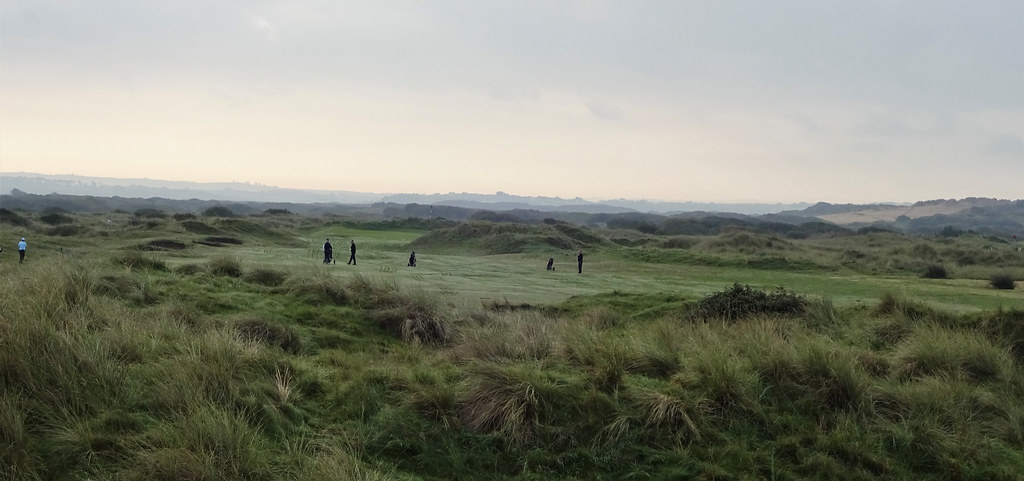
The difficult back right hole location.
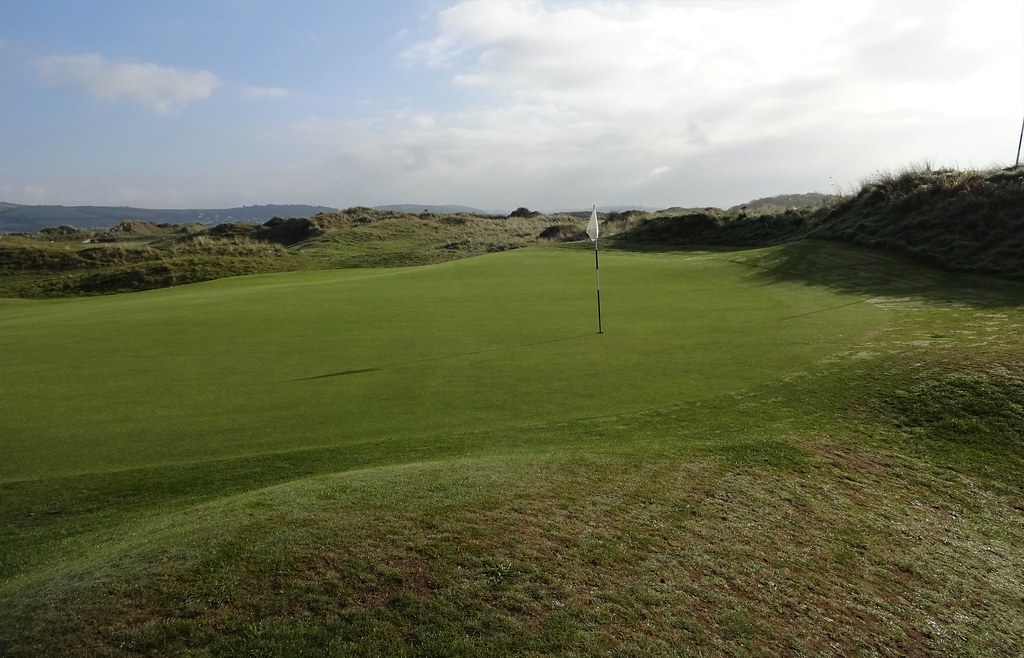
The first par 3 on the course, Tiddler, is an uphill teaser. The green was redesigned about 6 years ago. Apparently, the mound to the right was making it too easy to kick shots in. Consequently, that mound has been shaved back.
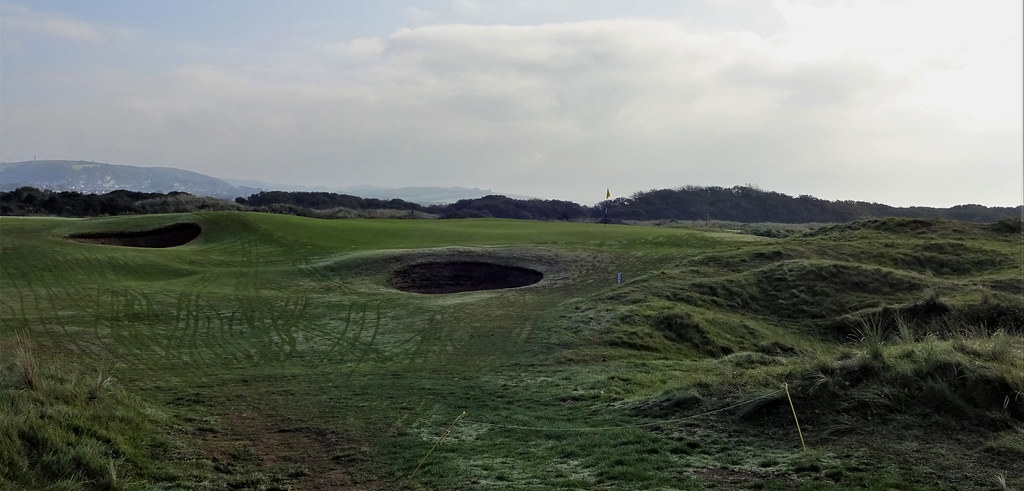
The course now drifts into moorland type of terrain with rushes and ditches heavily featured. It also becomes apparent that Saunton will not be a straight forward out n' back course as holes turn in various directions, not allowing the golfer to become overly comfortable with the wind direction. The tee shot on the 6th is quite demanding due to a ditch bordering the fairway down the right, but the hole is let down by the least interesting green on the course. Fairly long at 400ish yards and to a tighter than readily apparent fairway, the 7th is a great example of an interesting flat hole which creates a welcome balance with holes running through dunes.
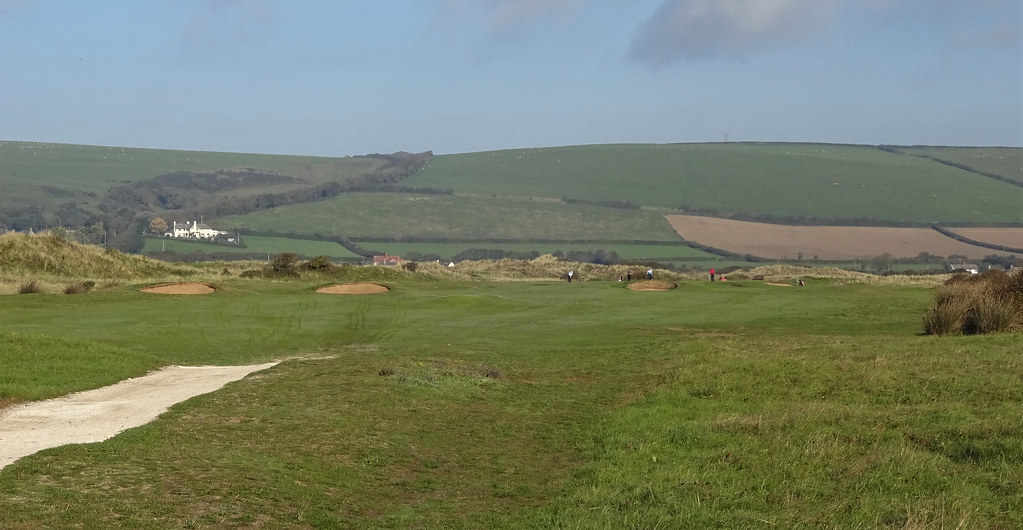
The angle of the green running behind the two right bunkers is evident once beyond the centreline bunker. The twotier effect of the green is also interesting.
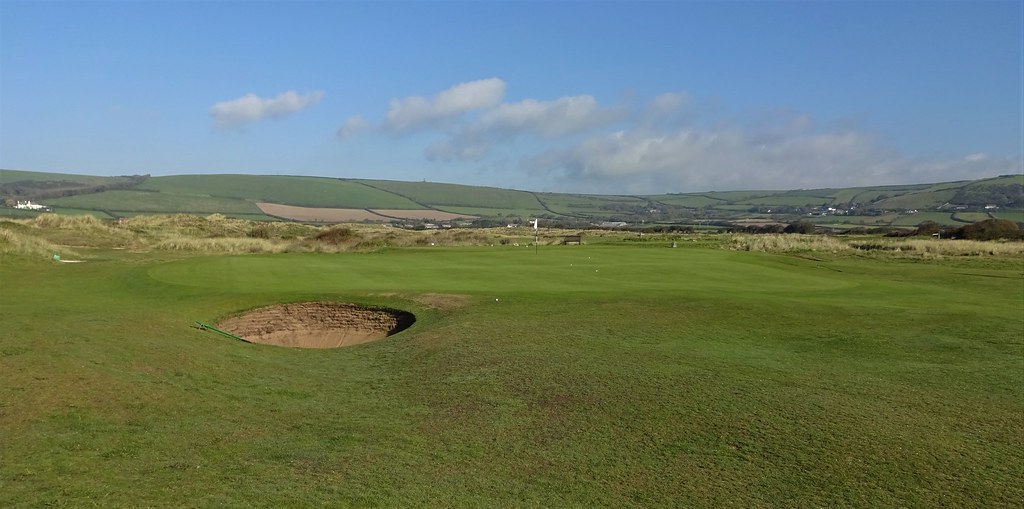
I often say that a links without a daring blind drive over a dune is somehow a less than satisfying experience. Luckily, Saunton provides this thrilling feature in the form of the 8th...which also heralds the start of a tremendous run of short two-shotters. However, the true test of the hole is in the approach as the green is nestled in a horseshoe of dunes/mounding.
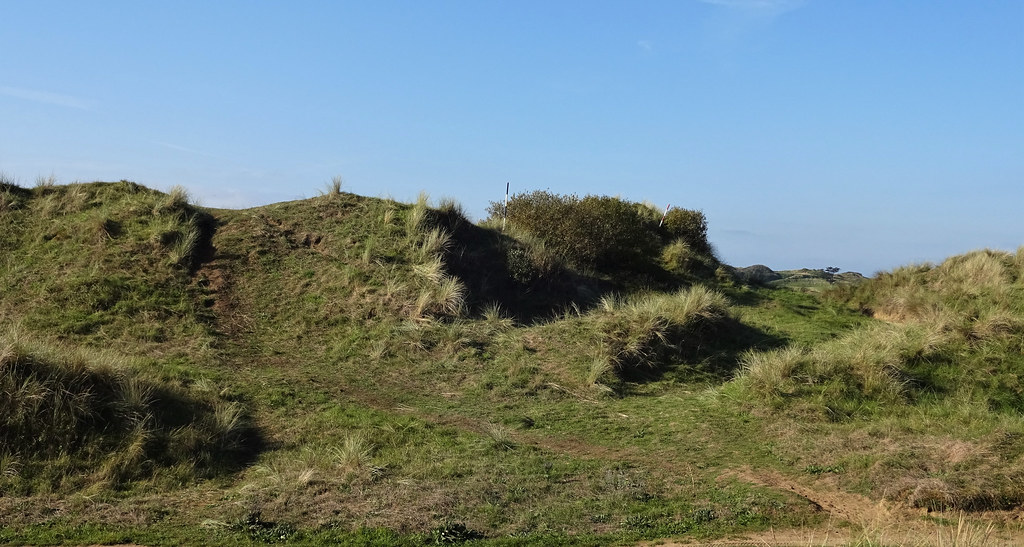

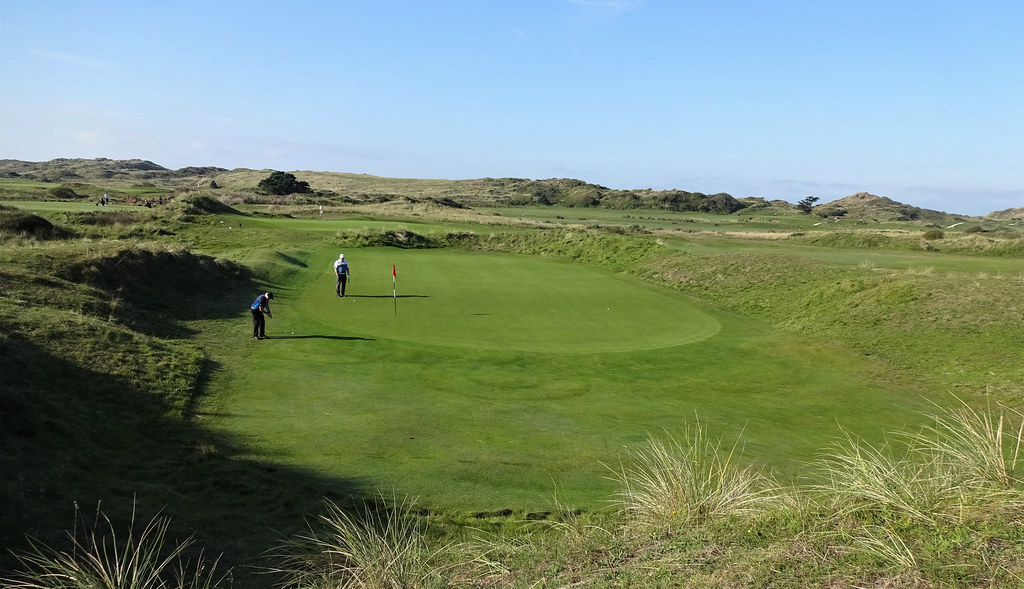
The side finishes very well - in fact the stretch between 7 and 11 is probably my favourite on the course. From the tee #9 is visually confusing with the wind coming off the left. The far bunker is perfectly placed on the outside of the leg to make players take on the left bunkers - thus leaving a terrible angle of approach.
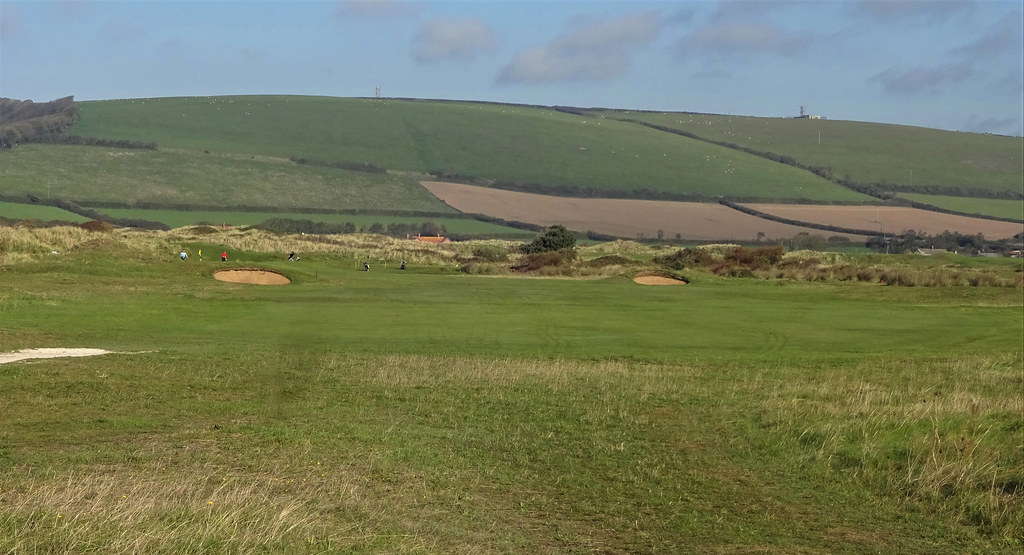
The green nestles beautifully into the site.
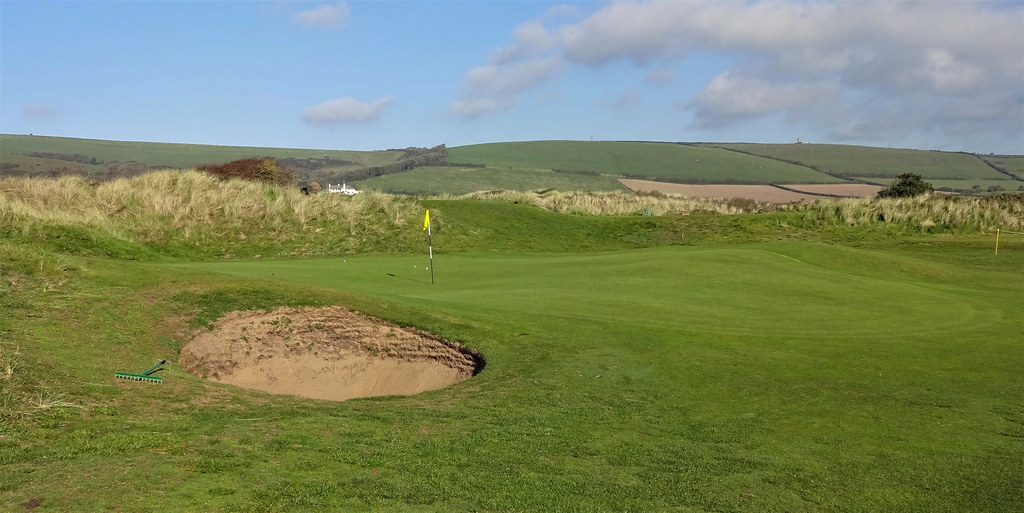
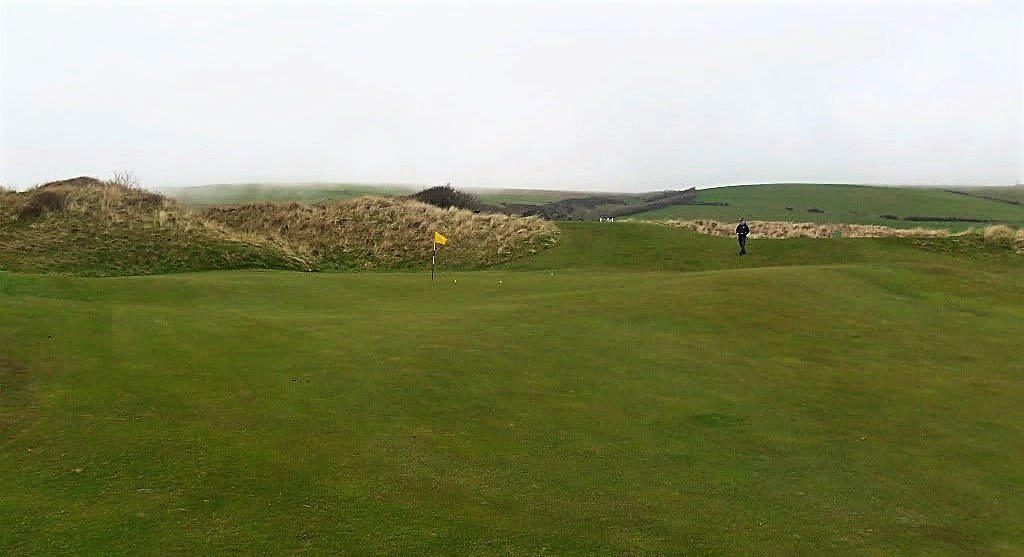
Its difficult to tell in pix, but the greens have a fair bit of movement to them with little tiers creating quite severe sections; many of the greens feel very modern. I wonder if Cotton added more touches than folks realize or if perhaps when the greens were re-laid in the 80s some contour was added.
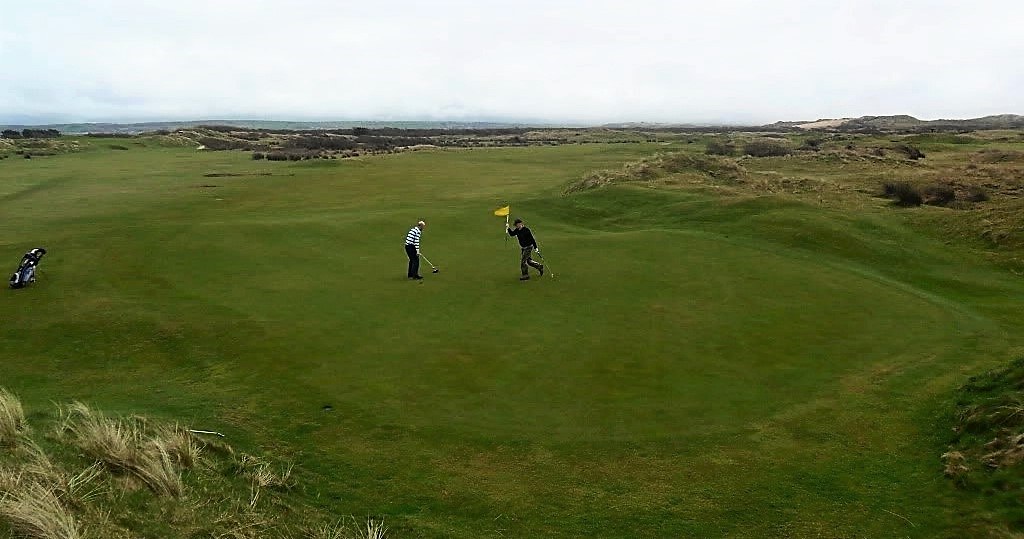
#10 is a classic sucker hole both from the tee and on the approach. It is better to lay back to a comfortable full club distance than it is to have a go at the green 313 yards away. One of the few criticisms of Saunton I can muster is the propensity of flat fairways. This may be a consequence of the WWII military training. Notice the fantastic random feature of sea grass down the left.

One can see that it is better to approach from the left of the fairway so as to take advantage of the green length.
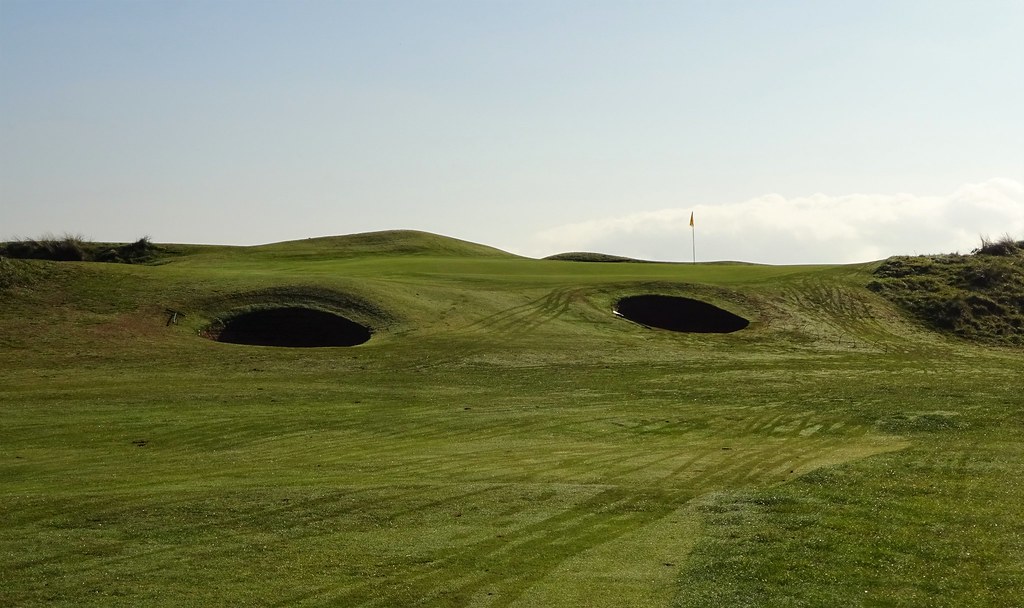
Looking back to the tee.
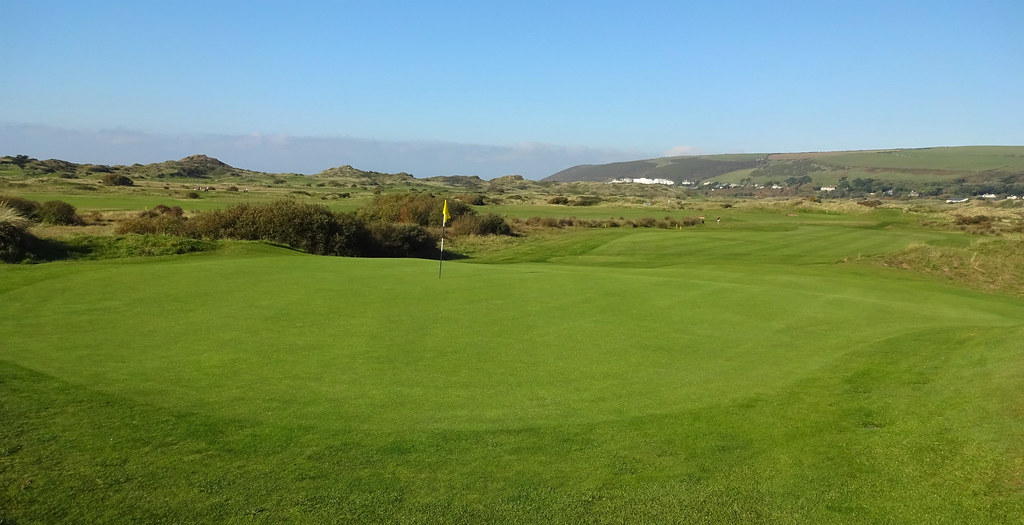
I expect to be in the minority, but I admire holes which are manufactured from land which is far from ideal. Like St Enodoc's 4th, Saunton's 11th is not a looker, but it provides what the game is about - thinking. The hole is roughly 350 yards with the corner of a field being the prime hazard off the tee. Depending on where the flag is, one can have a bash and try to execute the finicky chip over a bunker or lay back for a full club approach.

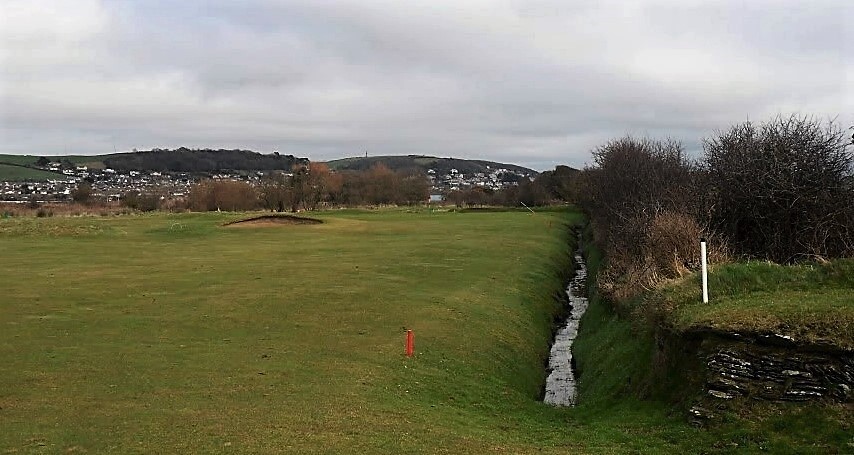
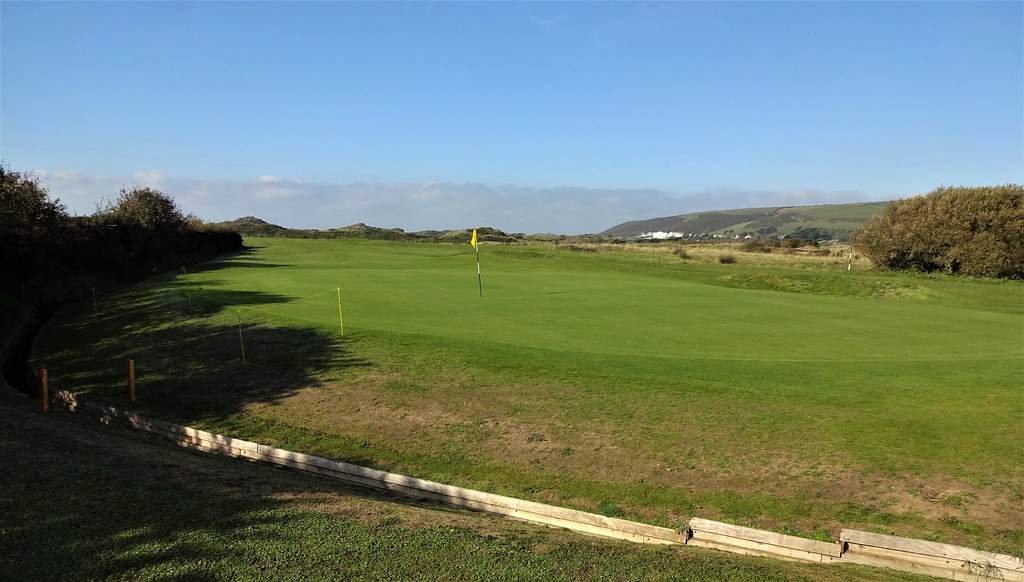
This ends a marvelous four hole stretch which is completely unique. Like the 11th, #s 12, 13 and the tee shot on 14 are also in moorland country more reminiscent of Exmoor than links. Although, I have a lot of time for these holes. The 12th is perhaps the best of this run; a longish two-shotter with nasty rough right and a ditch left. The greens have the curious effect of seeming modern because of their elevated nature and broad contours.
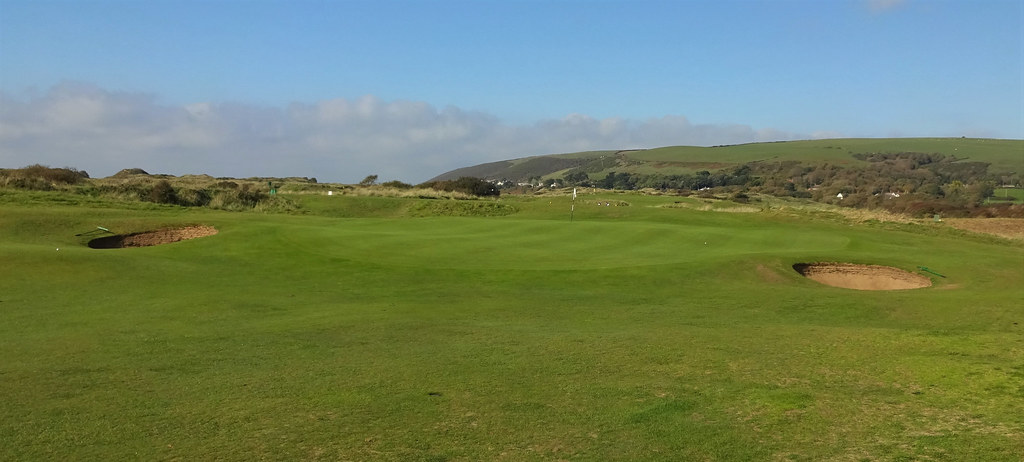
With only two short holes in the first thirteen, Saunton must be a bit unusual, unfortunately, this isn't a positive feature. Be that as it may, #13 is probably Saunton's best par 3 due to the severity of the green contours.
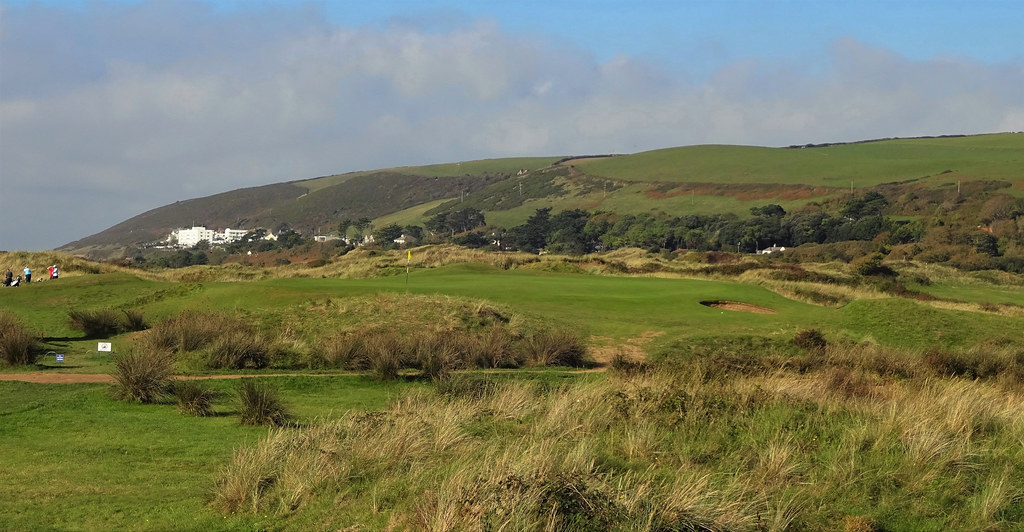
#14, or Narrows, is unbelievably difficult if a 4 is the goal. To gain a decent glimpse of the green the tee shot must be played as close to the right fairway bunkering as one dares. There is maybe 10 yards of bail area if one can't reach the green...in the middle of the fairway.
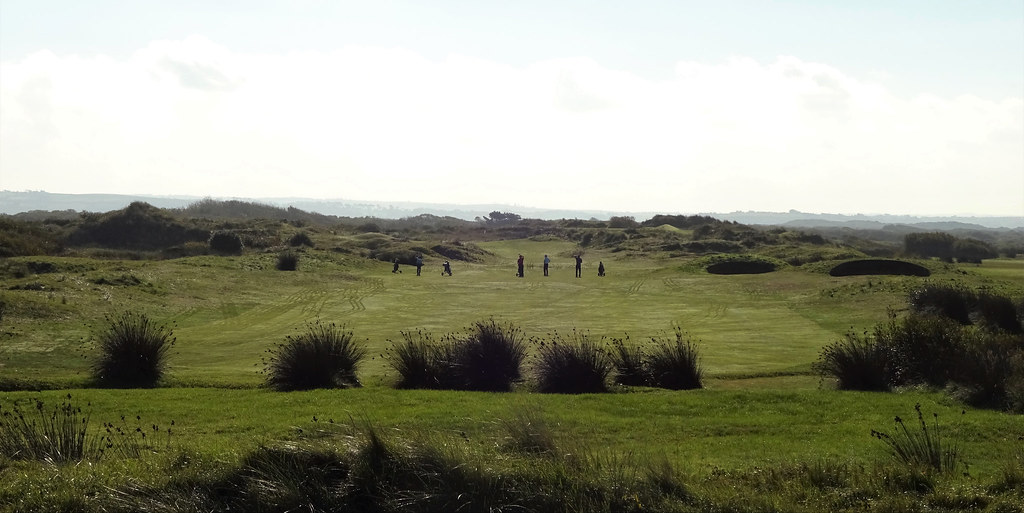
There is nowhere to lay up on this 432 yard beast.
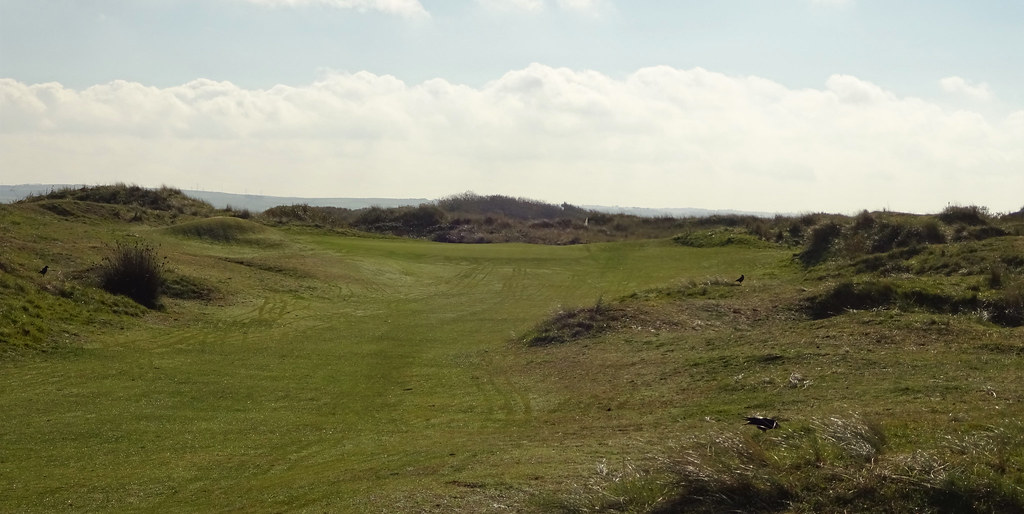
Looking back to the tee - Narrows is an apt name.
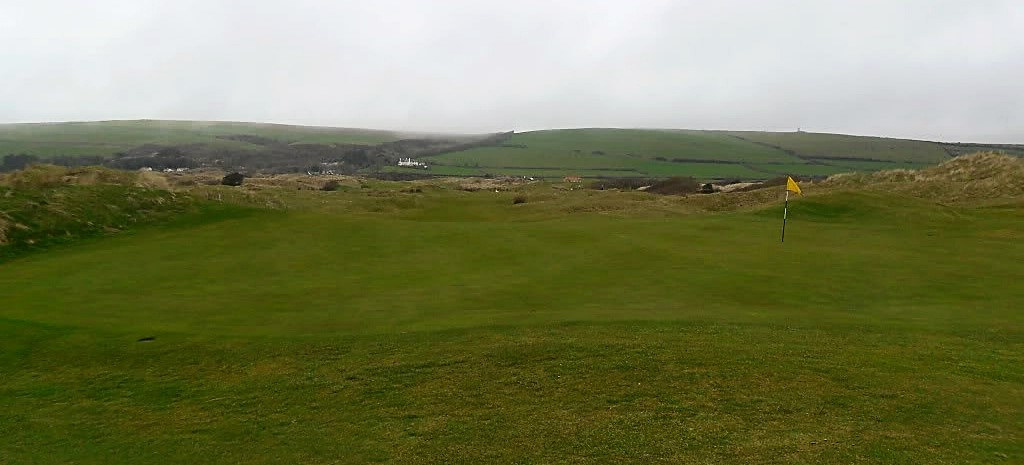
The second and final three-shotter, 15 leaves pure linksland for the tee shot. This is a relatively short par 5, but in the winter it still seemed awfully difficult to reach. The real star of this hole is the green; it rests on a small plateau with off-set tiers.
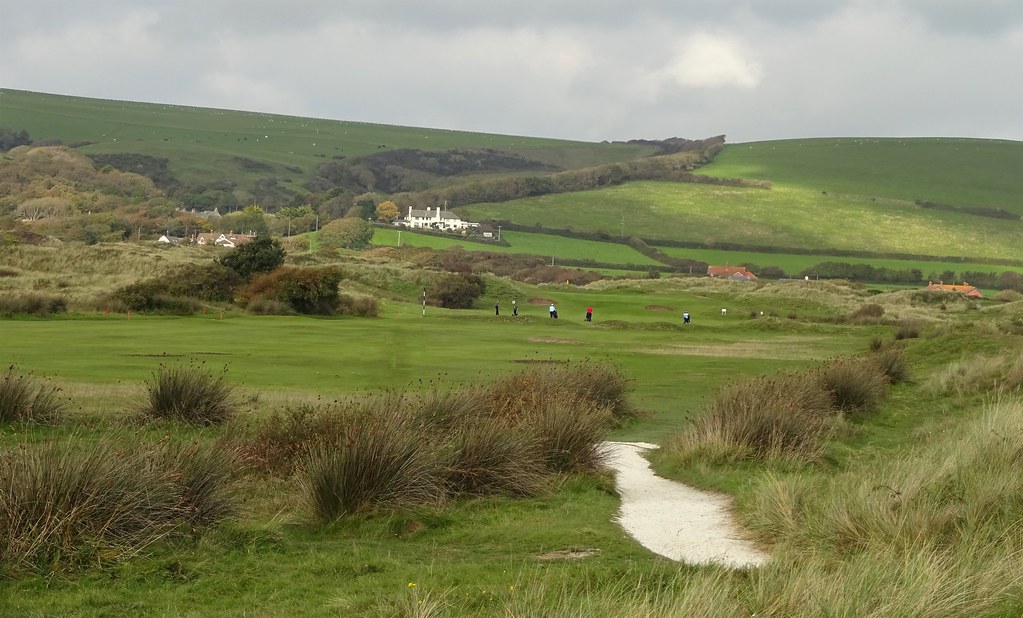
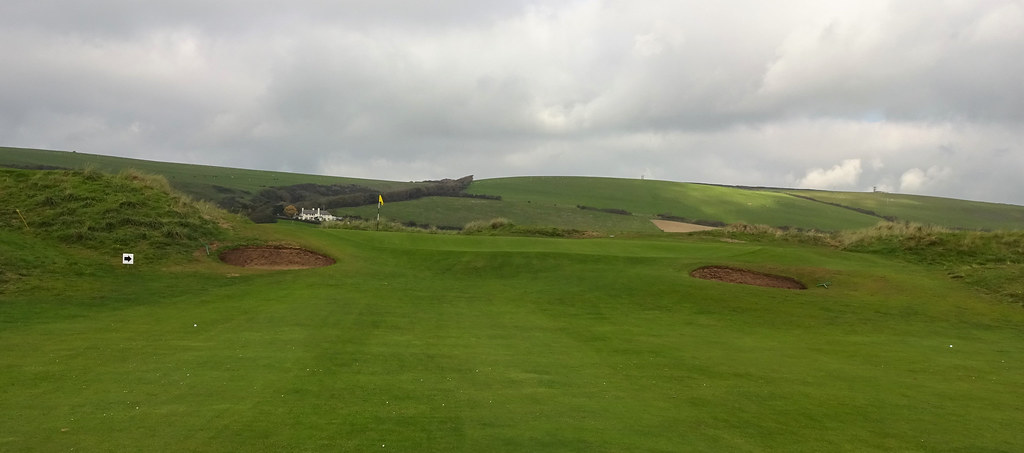
Another tortuous long par 4, the 16th is probably the best of this sort at Saunton. While the two bunkers to the outside of the leg are very well placed, they aren't terribly attractive. The approach must hold a shelf cut off the left dunes. Yes, its a tough shot, but ever so much fun.
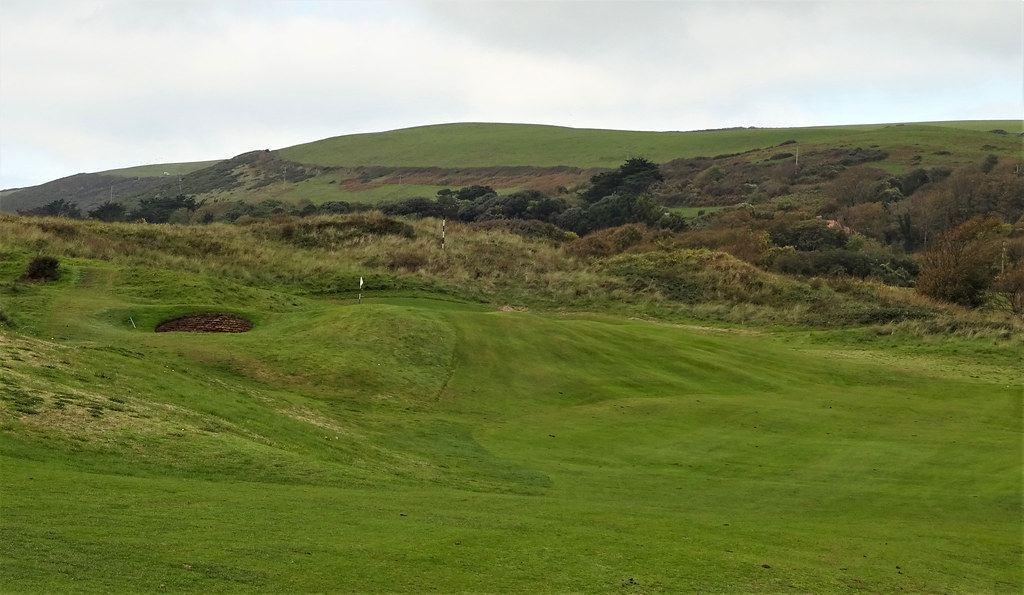
Another terrific green site and interesting contours.

The penultimate hole is a long par 3. Not a bad hole at all, but not as good as the other par 3s. The home hole, wonderfully named Isaacs Slopes, apparently after the right dune in the drive zone, is a good one that finishes directly in front of the house, just as a golf course should.
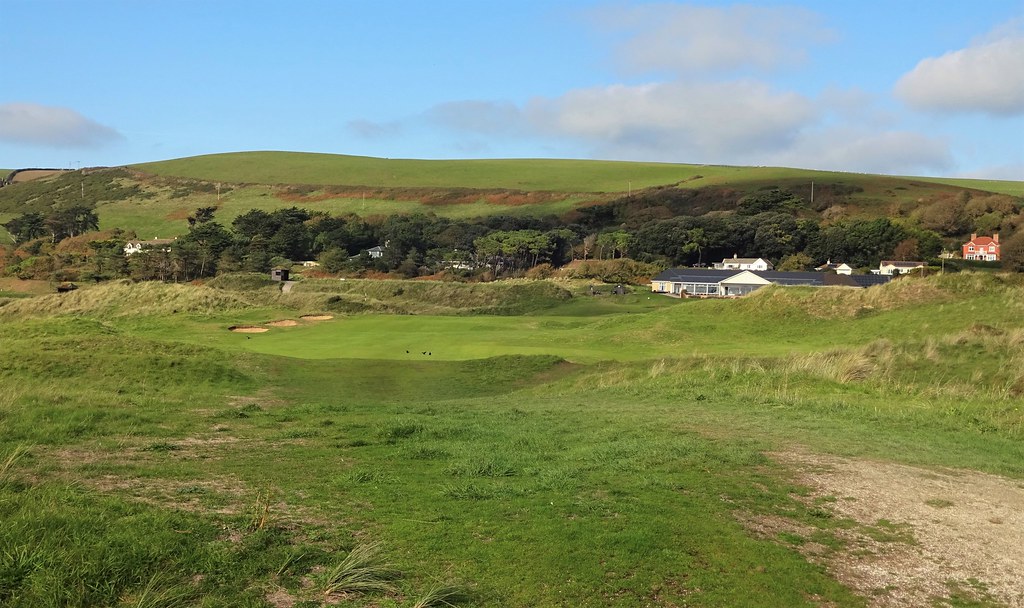
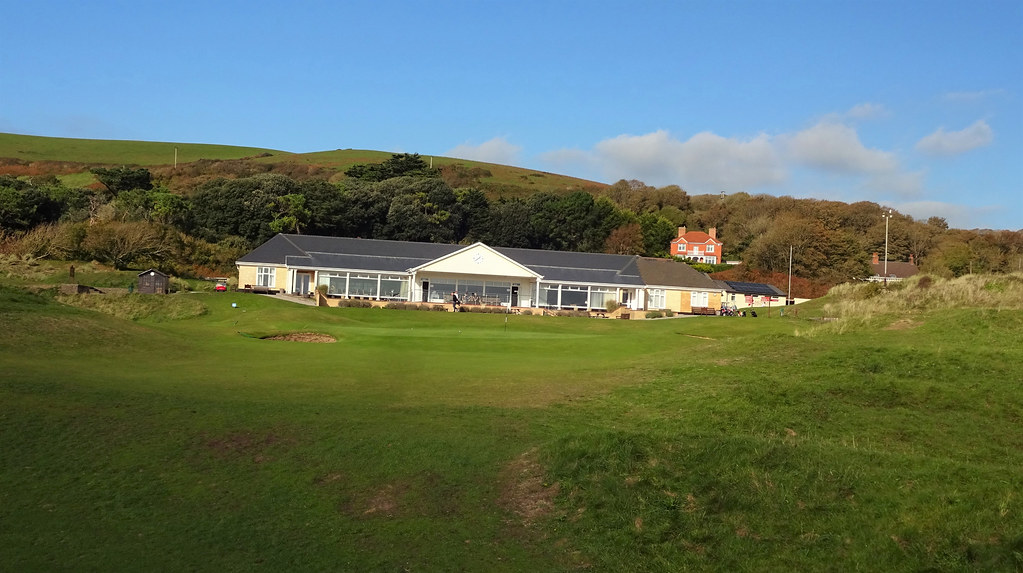
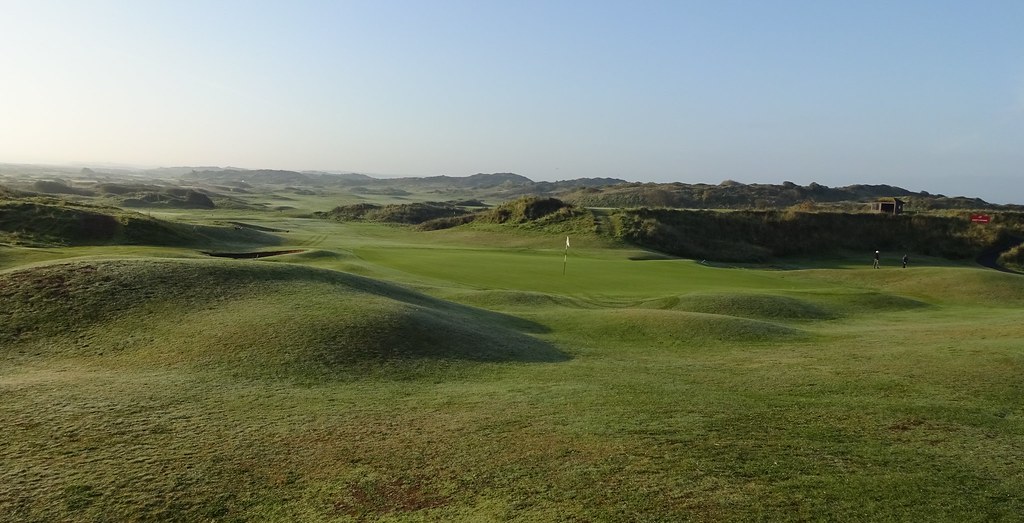
It had been about 6 years since my last visit to Saunton – too long by anyone’s count for Saunton is more than merely good golf. Not many courses in England are its superior and that is high praise indeed. Three aspects of Saunton East impress me greatly. First, while the threes and fives are not top notch, the variety and quality of the par 4s is outstanding. There isn't a single one of the bunch I could could say is less than good. Additionally, the 16th is an All-England candidate. Second, I rather admire the restraint required to keep most of the tees on lower ground (or level with the green) as hill climbing for a set-piece view can become tiresome. Finally, the variety of greens is unusually good for a links. I find it perplexing that anybody would have anything but praise for the East. 2018
Ciao